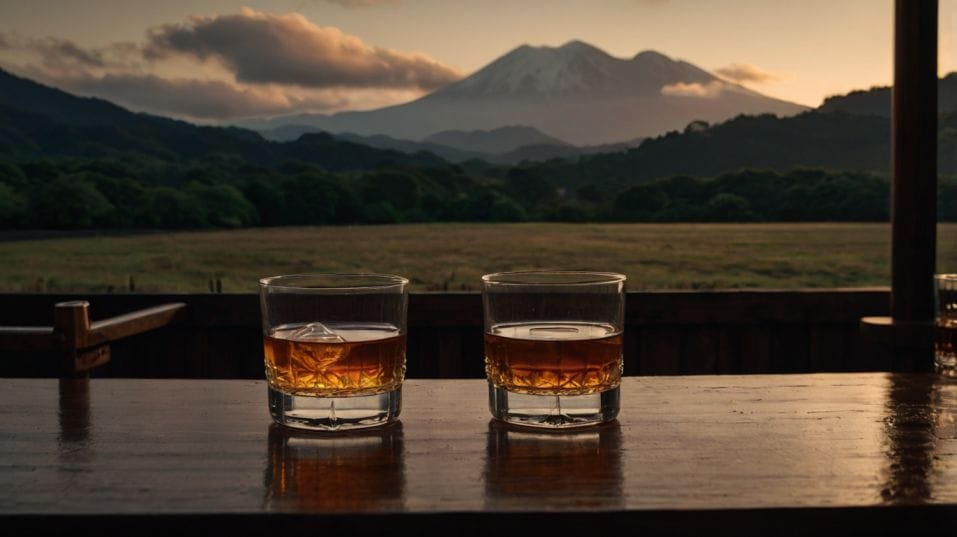Why Some Japanese Whiskeys Are Scotch Clones
Why do some Japanese whiskeys taste like Scotch? Learn the truth behind the label, sharpen your palate, and collect bottles with confidence.

Ever sip a Japanese whiskey and think, Wait—is this Scotch? You’re not imagining it. Some Japanese bottles don’t just echo Scotch—they replicate it.
That’s not a coincidence or clever marketing. It’s baked into the history, the production methods, and sometimes, the legal gray zones.
If you’re starting your whiskey journey and want to avoid guesswork, understanding these Scotch clones is your shortcut to smarter sipping, better collecting, and a sharper palate.
A Brief History of Borrowing
The foundation of Japanese whiskey is built on reverence for Scotch—not just inspiration, but replication. Masataka Taketsuru, one of Japan’s earliest whiskey pioneers, didn’t just visit Scotland.
He studied chemistry at Glasgow University, trained at Scottish distilleries, and married a Scottish woman before returning home to build Japan’s first true whiskey operation.
He didn’t try to “Japanese-ize” Scotch. He tried to recreate it, precisely. Still types, fermentation practices, cask choices—it was all imported, sometimes literally.
Early Japanese whiskey was a craft in mimicry, not because Japan lacked originality, but because it was mastering the fundamentals first.
That lineage still shows. Many Japanese whiskeys maintain a Scotch-like elegance: subtle peat, restrained sweetness, long fermentation, and light-bodied distillate.
But there’s a more modern wrinkle that muddies the waters for collectors and curious drinkers alike.

The Import Loophole
Until very recently, Japanese whiskey didn’t have a strict legal definition. That allowed producers to import Scotch or Canadian distillate, blend it with a small amount of domestic spirit, and label it “Japanese whiskey.”
You could age it in Japan—or not. You could blend it with grain neutral spirit—or not. As long as it was bottled in Japan, the label could say “Japanese Whiskey.”
This doesn’t make all these products bad. Some taste excellent. But it does blur the line between heritage and branding.
It also creates confusion for people buying with the assumption that “Japanese” means homegrown, artisanal, or culturally distinct. Often, it doesn’t.
Knowing this lets you collect with more intent. It also gives you a sharper sense of what’s actually in the bottle.
Style vs. Substance
Not every whiskey needs to shout to be heard. The best Japanese whiskeys are known for nuance—delicate fruit notes, gentle smoke, soft oak, and clean finishes.
But a lot of that DNA overlaps with Scotch, especially Speyside and Highland profiles.
A Shared Set of Tools
That overlap isn’t just historical—it’s practical. Japanese distillers often source the same barley, use Scottish-style pot stills, and even buy barrels from the same cooperages.
Many use Mizunara oak, which adds a Japanese fingerprint, but even that’s often used alongside ex-bourbon and sherry casks straight out of Scotland or Spain.
So when you taste something “Scotch-like,” it’s not your imagination. It’s alignment—sometimes deliberate, sometimes unavoidable.
But here's the kicker: just because something is a Scotch clone doesn’t mean it's inferior. It means it's part of a lineage. Your job is to recognize where the line ends and where true innovation begins.
Learning to Taste Through the Noise
When you strip away marketing and myth, what you’re left with is flavor. That’s the only thing that matters. And once you train your palate to tune into that, the label becomes less important than the experience.
Ask yourself: does this whiskey show intention? Is the balance right? Are the flavors integrated, or are they just layered on? Can you taste restraint and precision, or is it all about cask flash and oak tricks?
This is how pros taste. Not by guessing where a bottle came from, but by paying attention to what it's doing in the glass.
When a Japanese whiskey mimics Scotch, it's not a failure of creativity. Sometimes it's a feature. Other times, it's camouflage. Your job is to tell the difference.
Collect With a Knife, Not a Net
If you’re serious about collecting whiskey—not just drinking it—you need to treat it like curating. Every bottle should earn its place. Knowing which Japanese whiskeys are Scotch clones helps you do that.
Know What You’re Looking For
Look for distilleries that control their full production chain: in-house distillation, clear sourcing, transparency on casks.
Avoid vague language like “crafted,” “inspired by tradition,” or “master blended.” Those usually mean someone’s hiding a shortcut.
Some bottles wear their Scotch DNA proudly and push it in interesting directions. Others hide behind it. When you understand the difference, you can build a collection that tells a story instead of repeating one.
Final Thoughts
Not all Japanese whiskey is Scotch in disguise—but some of it absolutely is. That’s not a reason to avoid it. It’s a reason to be more precise in how you buy, taste, and talk about whiskey.
So here’s what to do next: Pick up a Japanese bottle you already own. Taste it side by side with a Scotch that has similar age, ABV, or cask type. Train your palate to spot what’s similar, what’s different, and what’s just noise.
Then go deeper. Learn the distillery’s process. Ask who distilled it, where the grain came from, what the water source is. If you can’t get those answers, ask yourself why.
Flavor doesn’t lie. Labels sometimes do. Drink better. Collect sharper. Taste like it matters—because it does.




